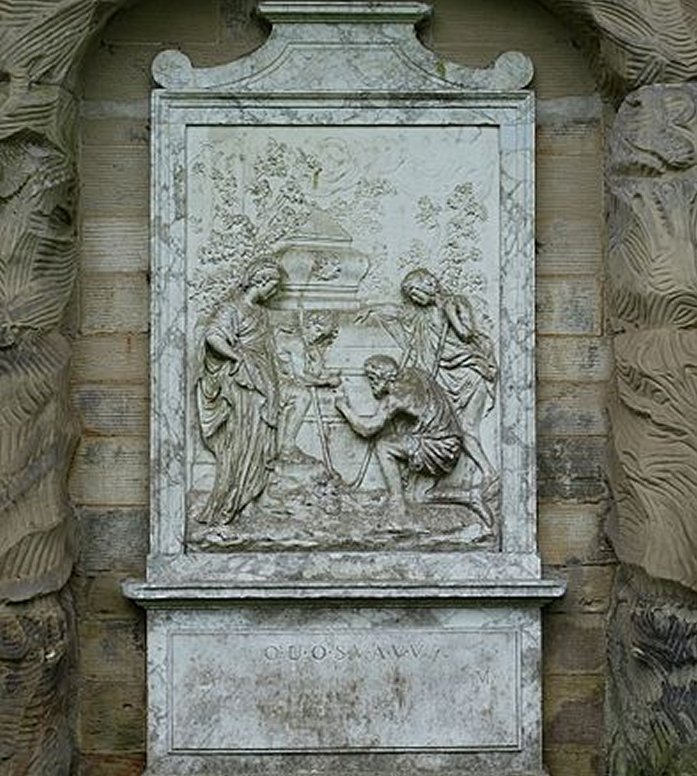Shepherd’s Monument Mystery: Yet Another Undeciphered Inscription
Ellen Lloyd - AncientPages.com - All across the world, there are still many mysterious ancient scripts, tablets, codes, and maps that, until this day, remain undeciphered.
Multiple attempts to solve the enigma have failed. Many of the world's greatest minds have tried to crack the code but without success, including Charles Dickens and Charles Darwin.
Shepherd's Monument, Shugborough Estate - Staffordshire, England. Image credit: Daderot - CC0 1.0
Margaret, Countess of Lichfield (1899–1988), claimed that the inscription was a love message, referring to Out Your Own Sweet Vale, Alicia, Vanishes Vanity. Twixt Deity and Man Thou, Shepherdess, The Way, but no source for these words have ever been traced.
In his book "Uncracked Codes and Ciphers" Vance Gortman mentions that:
"Steve Regimbal interprets the letters as standing for a new Latin translation of the phrase "Vanity of vanities, saith the preacher; all is vanity." (Ecclesiastes 12:8), namely Orator Ut Omnia Sunt Vanitas Ait Vanitas vanitatum. He has speculated that the phrase may be the source of the earlier inscription "OMNIA VANITAS," which may have been carved on an alcove at the estate of one of Thomas Anson's associates, George Lyttleton, " and "former NSA linguist Keith Massey interprets the letters as an initialism for the Latin phrase Oro Ut Omnes Sequantur Viam Ad Veram Vitam ("I pray that all may follow the Way to True Life") in reference to the Biblical verse John 14:6, Ego sum Via et Veritas et Vita ("I am the Way, the Truth, and the Life").
Many have tried to solve the puzzle of the 10-letter inscription - DOUOSVAVVM, but in vain.
For a long time, the Shepherd's Monument in Staffordshire, England, and its cryptic inscription was considered a great puzzle to all who tried to solve the enigma of the mysterious letter combination. The code inscribed on the Shepherd's Monument has eluded decipherment for over 250 years. Those of a romantic disposition believed it to be a coded message of the kind used by the Knights Templar and their successors to point to the whereabouts of the Holy Grail or some other religious relic. Others believed it to be a private affirmation of love.
The monument located at the grounds of Shugborough Hall in Staffordshire, England, was commissioned by Thomas Anson, paid for by his brother, Admiral George Anson, and fashioned by the Flemish sculptor Peter Scheemakers.
It is set within a stone arch resembling a cave entrance, carved to look natural and wild. It contains a marble bas-relief copy of Poussin's painting "The Shepherds of Arcadia" and an engraved inscription below it.
The relief shows a woman and three shepherds, two of whom are pointing to a tomb. On the tomb is carved the Latin text ET IN ARCADIA EGO ("I am also in Arcadia" or "I am, even in Arcadia").
The carving displays several minor alterations from the original painting.
The eight letters 'OUOSVAVV', framed by the letters 'DM'. Image credit: Naggie34 - Public Domain
Notably, the letters to which the shepherds are pointing have been changed, and an extra sarcophagus has been placed on top of the main tomb. Also, the relief sculpture is a mirror (or horizontally reversed) image of the painting. Above the Poussin scene are two stone heads, one likened to the goat-horned Greek god Pan.
Below it, an unknown craftsman carved the mysterious inscription, a sequence of ten letters that have never been satisfactorily explained and called one of the world's top uncracked cipher texts.
According to the Telegraph, "the Shugborough mystery arose in the years between 1748 and 1758 when the monument containing the code was installed." The estate was the home of the Anson family, whose most illustrious member was George Anson, one of Britain's greatest admirals.
In 1740, Anson led a fleet of seven ships on an epic circumnavigation, the highlight of which was the seizure of the Spanish bullion ship Nuestra Senora de Cavadonga." Anson's share of the booty ensured him a happy retirement and the expansion of Shugborough, the home of his brother Thomas. The National Trust now owns the estate but is still partially occupied by his descendant, the Earl of Lichfield.
The Anson brothers were considered members of secret societies, which abounded then.
One, the Priory of Sion, was regarded as a successor of the medieval Knights Templar, persecuted as heretics for their belief that Christ was not divine. Legend had it that they were the guardians of relics recovered from the Holy Land, including the Holy Grail, the cup used by Christ at the Last Supper.
The monument carried a relief based on a painting by Poussin, Et in Arcadia Ego. The artist was thought to be a member of the Templars. The memorial has the picture's title, and below are the ten letters with the D at the beginning and the M at the end, slightly lowered.
An American formerly involved with the military recently used the painting as a key to unlock the code.
Using a series of grids, he came up with the words Jesus H Defy, interpreting the H as chi, the Greek letter used to denote the Messiah.
Result: a Templar message defying the description of Jesus as the Son of God. The American, who refuses to be identified, believes other messages reside in the matrix. GCHQ endorsed his methodology but not necessarily his conclusions.
So, what is to be made of it all?
Richard Kemp, the general manager of the Shugborough Estate, said: "This confirms a link with the Templars. It's a very exciting discovery that confirms what was always rumored to be the case." And with that, he took off in search of the Grail.
Some might think the "discovery" is less than convincing. But Murlyn Hakon, of Bletchley Park, said: "There is something there."
However, there was another explanation.
Sheila Lawn, 81, a code-breaker at Bletchley during the war, favored a solution offered by another team. They say the eight central letters represent a Latin poem to a departed loved one: "Optima Uxoris Optima Sororis Viduus Amantissimus Vovit Virtutibus."
The lines are translated as: "Best Wife, Best Sister, Widower Most Loving Vows Virtuously." She said: "I believe in the simple approach, and this appears to be an elegant solution."
Still, there is a good reason to suppose that the Shepherds Monument was not there in 1748.
Philip Yorke, Lady Elizabeth Anson's brother and husband of Jemima, Marchioness Grey, visited in August 1763 and wrote to his father, Lord Hardwicke, describing, as he writes, the "many embellishments since I saw it (Shugborough) in 1748."
"I should not omit to mention the Bas Relief from Poussin's Arcadian Picture, the most elegant piece of modern sculpture I ever beheld & does great honor to Scheemaker's chisel."
Also, recent research has found that the first known mention of the monument is in a letter from Lady Elizabeth Anson, the wife of Admiral George Anson, to her brother-in-law Thomas in 1756. It means that the memorial must have been constructed on or before 1756.
It limits the possible date of the monument's construction from between 1749 to 1756. These years are critical as it is during these years that one very enigmatic figure entered the lives of the Anson family who could have been the reason for the monument's construction. This person is none other than the Count of St. Germain.
Written by - Ellen Lloyd – AncientPages.com
Copyright © AncientPages.com All rights reserved. This material may not be published, broadcast, rewritten or redistributed in whole or part without the express written permission of AncientPages.com
More From Ancient Pages
-
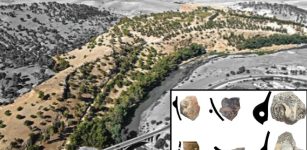 Evidence Of An Unknown Neolithic Society At Oued Beht In North Africa Discovered
Archaeology | Sep 30, 2024
Evidence Of An Unknown Neolithic Society At Oued Beht In North Africa Discovered
Archaeology | Sep 30, 2024 -
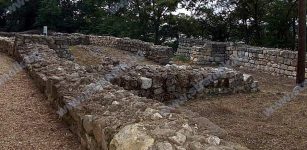 Fortress Wall Of Ancient Roman City Of Sexaginta Prista Discovered
Archaeology | Apr 16, 2016
Fortress Wall Of Ancient Roman City Of Sexaginta Prista Discovered
Archaeology | Apr 16, 2016 -
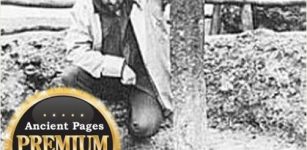 The Iron Man In The Kottenforst And Other Puzzling Ancient Artifacts Of Unknown Origin And Purpose
Featured Stories | Mar 10, 2014
The Iron Man In The Kottenforst And Other Puzzling Ancient Artifacts Of Unknown Origin And Purpose
Featured Stories | Mar 10, 2014 -
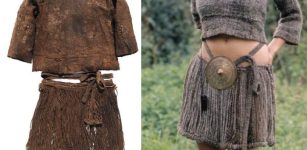 Egtved Girl’s Unique 3,400-Year-Old Style Of Dress
Featured Stories | Nov 17, 2023
Egtved Girl’s Unique 3,400-Year-Old Style Of Dress
Featured Stories | Nov 17, 2023 -
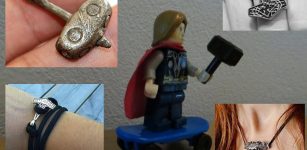 Mjölnir: Thor’s Terrible Axe-Hammer And Its Magical Powers In Norse Mythology
Featured Stories | Apr 20, 2017
Mjölnir: Thor’s Terrible Axe-Hammer And Its Magical Powers In Norse Mythology
Featured Stories | Apr 20, 2017 -
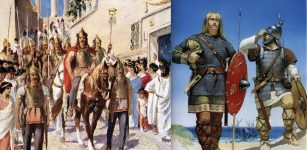 Who Were The Goths And Where Did They Come From?
Civilizations | Apr 16, 2019
Who Were The Goths And Where Did They Come From?
Civilizations | Apr 16, 2019 -
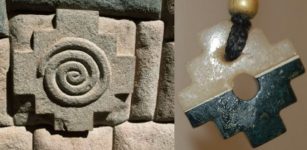 Mysterious Chakana – Sacred Inca Cross And Its Connection To The Southern Cross Constellation
Ancient Symbols | Sep 15, 2018
Mysterious Chakana – Sacred Inca Cross And Its Connection To The Southern Cross Constellation
Ancient Symbols | Sep 15, 2018 -
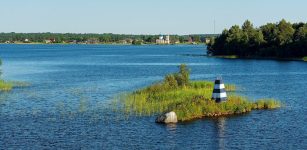 How Did A Major Cooling Event 8,200 Years Ago Affect Hunter-Gatherers?
Archaeology | Jan 28, 2022
How Did A Major Cooling Event 8,200 Years Ago Affect Hunter-Gatherers?
Archaeology | Jan 28, 2022 -
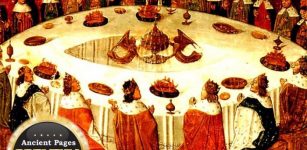 The Faery Grail Of Hospitality And Accord – Secrets Of The Elucidation – Part 2
Featured Stories | Sep 27, 2019
The Faery Grail Of Hospitality And Accord – Secrets Of The Elucidation – Part 2
Featured Stories | Sep 27, 2019 -
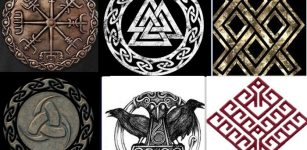 10 Viking, Norse And Icelandic Symbols Explained
Ancient Symbols | Sep 5, 2023
10 Viking, Norse And Icelandic Symbols Explained
Ancient Symbols | Sep 5, 2023 -
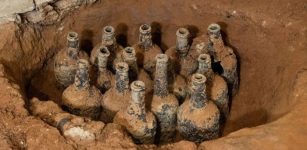 Baffling Archaeological Find At George Washington’s Mount Vernon
Archaeology | Jun 20, 2024
Baffling Archaeological Find At George Washington’s Mount Vernon
Archaeology | Jun 20, 2024 -
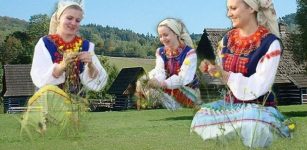 Lemko People – European Minority That Lost Their Homeland And Still Live In Exile
Civilizations | Jan 13, 2020
Lemko People – European Minority That Lost Their Homeland And Still Live In Exile
Civilizations | Jan 13, 2020 -
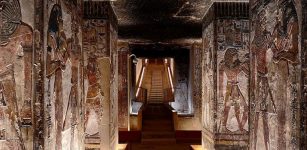 Why Pharaoh Seti I’s Tomb Had To Be The Most Glorious And Largest Ever Built In Valley Of The Kings
Featured Stories | Jun 19, 2021
Why Pharaoh Seti I’s Tomb Had To Be The Most Glorious And Largest Ever Built In Valley Of The Kings
Featured Stories | Jun 19, 2021 -
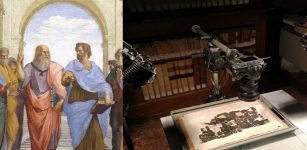 Has A Herculaneum Scroll Solved The Mystery Of Plato’s Death?
Linguistic Discoveries | May 8, 2024
Has A Herculaneum Scroll Solved The Mystery Of Plato’s Death?
Linguistic Discoveries | May 8, 2024 -
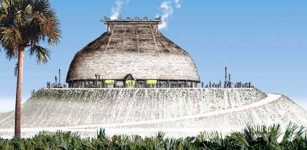 Why Were The 4,000-Year-Old Native American Shell Ring Villages Suddenly Abandoned?
Archaeology | Mar 3, 2022
Why Were The 4,000-Year-Old Native American Shell Ring Villages Suddenly Abandoned?
Archaeology | Mar 3, 2022 -
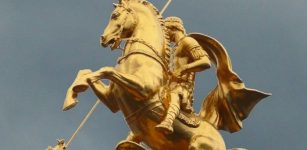 Saint George: Knight Warrior Who Refused To Denounce His Faith And Died A Martyrs Death
Featured Stories | Jun 3, 2019
Saint George: Knight Warrior Who Refused To Denounce His Faith And Died A Martyrs Death
Featured Stories | Jun 3, 2019 -
 Never-Before-Seen Scottish Manuscript Of Esther Inglis Unveiled
Scripts, Paintings & Inscriptions | Jul 22, 2023
Never-Before-Seen Scottish Manuscript Of Esther Inglis Unveiled
Scripts, Paintings & Inscriptions | Jul 22, 2023 -
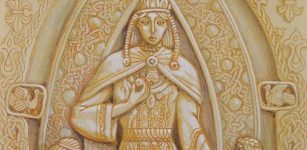 Lada: Jump Over Fire For Goddess Of Beauty, Love, And Marriage In Slavic Mythology
Featured Stories | Dec 11, 2017
Lada: Jump Over Fire For Goddess Of Beauty, Love, And Marriage In Slavic Mythology
Featured Stories | Dec 11, 2017 -
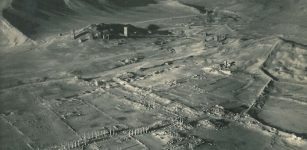 Food Insecurity Led To An International Conflict 2,000 Years Ago
Archaeology | Sep 22, 2022
Food Insecurity Led To An International Conflict 2,000 Years Ago
Archaeology | Sep 22, 2022 -
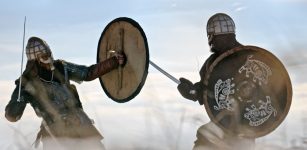 Holmgang – Dangerous Viking Duel Settled Disputes
Ancient History Facts | Mar 10, 2018
Holmgang – Dangerous Viking Duel Settled Disputes
Ancient History Facts | Mar 10, 2018

